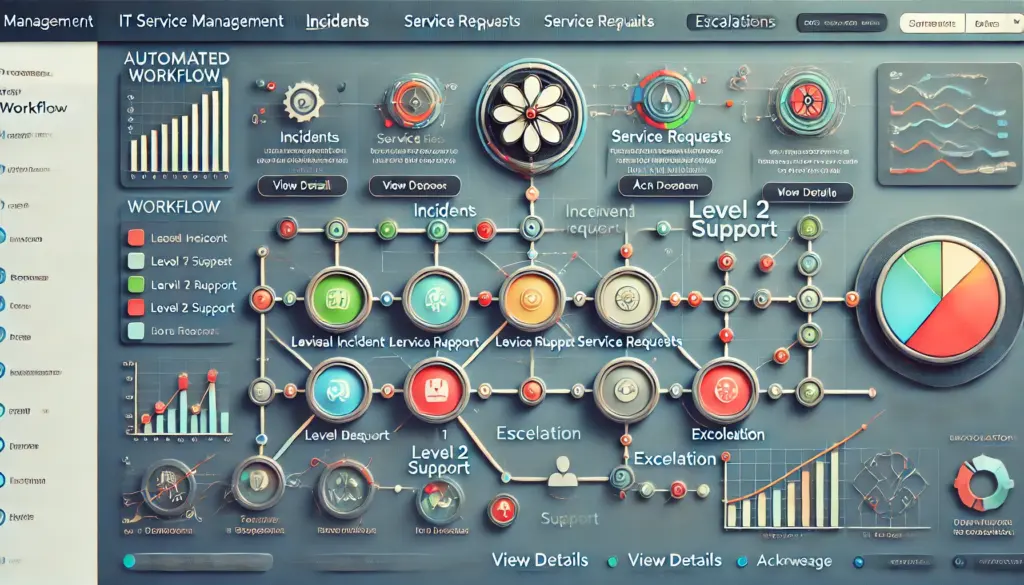Designing Effective Incident Playbooks for Your Team
🚀 Introduction
Incident management is critical for maintaining system stability and minimizing disruptions in IT operations. However, when an incident occurs, teams often struggle to respond quickly and effectively, leading to longer resolution times, miscommunication, and potential revenue loss.
To ensure a structured and efficient response, organizations rely on incident playbooks—step-by-step guides that help teams detect, assess, respond to, and resolve incidents.
In this comprehensive guide, we will explore:
✅ What an incident playbook is and why it’s essential
✅ Key components of a well-structured playbook
✅ Step-by-step process for designing an effective playbook
✅ Best practices to keep playbooks up to date

By the end of this blog, you’ll have a clear roadmap for building incident playbooks that enhance your team’s ability to handle incidents efficiently.
🛠️ What is an Incident Playbook?
An incident playbook is a predefined document that outlines the necessary steps for responding to specific incidents in a structured manner. It acts as a guide that helps IT teams navigate through incidents systematically, ensuring that every response is timely, effective, and well-coordinated.
A good playbook includes incident classifications, roles and responsibilities, technical steps, communication protocols, and post-incident documentation.
💡 Example of an Incident Playbook in Action
Imagine your website experiences a major outage due to a database failure. Without a structured response, teams may react chaotically, leading to longer downtime and customer dissatisfaction.
However, with a database outage playbook, the team would follow predefined steps, such as:
1️⃣ Detecting the issue through monitoring tools (e.g., New Relic, Grafana)
2️⃣ Assessing the impact and severity level
3️⃣ Notifying stakeholders using predefined escalation protocols
4️⃣ Executing a rollback or failover
5️⃣ Communicating progress updates
6️⃣ Conducting a postmortem and updating documentation
With a playbook in place, the incident response process becomes faster, more reliable, and more efficient.
🔑 Why Are Incident Playbooks Important?
📌 Incident playbooks are essential for:
✅ Reducing Response Time: With predefined steps, teams act quickly without wasting time deciding what to do.
✅ Minimizing Human Error: A structured process reduces the chances of missing critical steps.
✅ Ensuring Consistency: Every incident is handled in a uniform manner across teams.
✅ Improving Communication: Clearly defined responsibilities ensure smooth coordination among stakeholders.
✅ Enhancing Postmortem Analysis: Playbooks help teams analyze incidents and improve future responses.
📝 Key Components of an Effective Incident Playbook
A strong incident playbook should cover six essential components to ensure an organized and effective response:
1️⃣ Incident Classification
Define the different types of incidents and their priority levels:
- Critical Incidents (P1) – Complete system failure, data breaches, or security attacks.
- High-Priority Incidents (P2) – Major service disruptions that impact users significantly.
- Medium-Priority Incidents (P3) – Performance degradation, partial outages, or user complaints.
- Low-Priority Incidents (P4) – Minor bugs, UI issues, or non-urgent service requests.
Each classification should have clearly defined response steps and escalation paths.
2️⃣ Roles and Responsibilities
Clearly define the roles involved in the incident response process:
👨💼 Incident Commander (IC) – Leads the response effort and coordinates with teams.
🔧 Technical Lead – Diagnoses the root cause and implements technical fixes.
📢 Communication Lead – Manages stakeholder communication and updates.
📋 Scribe (Documenter) – Records actions taken for postmortem analysis.
Every team member should know their role and responsibility during an incident to avoid confusion.
3️⃣ Step-by-Step Incident Response Plan
A playbook should provide a detailed, step-by-step process for responding to each incident type:
📍 Detection – How is the incident identified? (e.g., alerts from monitoring tools, user reports)
📍 Assessment – How severe is the impact? Which services are affected?
📍 Containment – How can the issue be temporarily mitigated?
📍 Resolution – What steps should be taken to restore normal operations?
📍 Communication – How will updates be shared with stakeholders?
📍 Documentation – How will learnings be recorded for future improvements?
4️⃣ Communication and Escalation Protocols
Communication plays a crucial role in incident management. Your playbook should define:
📢 How updates are shared:
- Slack or Microsoft Teams channels for real-time updates
- Email notifications for executives and stakeholders
- Incident reports and status pages for transparency
⚠️ Escalation policies:
- When should an issue be escalated?
- Who should be informed at each stage?
- What are the response timelines for each severity level?
Well-defined communication workflows ensure clarity and alignment during incidents.
5️⃣ Tools and Resources
A well-equipped team needs the right tools to manage incidents effectively. Your playbook should include:
🔍 Monitoring Tools: New Relic, Grafana, Datadog
📞 Incident Management Tools: ServiceNow, Freshdesk
🔐 Security Tools: Splunk, CrowdStrike
🔄 Automation Scripts: Self-healing mechanisms for common failures
Having the right tools reduces manual effort and speeds up response times.
6️⃣ Postmortem and Continuous Improvement
After an incident is resolved, conduct a postmortem analysis to document:
📌 Root cause analysis (RCA) – What caused the issue?
📌 Lessons learned – What went well and what can be improved?
📌 Action items – How can we prevent similar incidents in the future?
📌 Updates to the playbook – Incorporate findings to improve future responses.
A culture of continuous learning ensures that incident response improves over time.
📌 Best Practices for Maintaining Incident Playbooks
✅ Keep it simple – Avoid overly complex documentation.
✅ Use visuals and checklists – Flowcharts help simplify decision-making.
✅ Regularly review and update – Technology evolves, and so should your playbooks.
✅ Train your team – Run mock drills and incident simulations.
✅ Store centrally – Ensure easy access via Confluence, Google Drive, or incident response platforms.
🎯 Conclusion
Incident playbooks are essential tools for managing IT incidents effectively. A well-structured playbook helps teams respond quickly, minimizing downtime and improving efficiency.
By following the step-by-step framework outlined in this blog, you can design a comprehensive, easy-to-follow incident playbook that streamlines response efforts.
📌 Does your team use incident playbooks? What challenges have you faced in designing them? Let us know in the comments!




